
Zacharias Topelius was a Finnish author, poet, journalist, historian, and rector of the University of Helsinki who wrote novels related to Finnish history.

Porvoo is a city and a municipality in the Uusimaa region of Finland, situated on the southern coast about 35 kilometres (22 mi) east of the city border of Helsinki and about 50 kilometres (30 mi) from the city centre. Porvoo was one of the six medieval towns of Finland, along with Turku, Ulvila, Rauma, Naantali and Vyborg. It is first mentioned as a city in texts from the 14th century. Porvoo is the seat of the Swedish-speaking Diocese of Borgå of the Evangelical Lutheran Church of Finland. Porvoo was briefly the capital of the former Eastern Uusimaa region.

Fredrik Pacius was a German-Finnish composer and conductor who lived most of his life in Finland. He has been called the "Father of Finnish music".

The Treaty of Nöteborg, also known as the Treaty of Oreshek, is a conventional name for the peace treaty signed at Oreshek on 12 August 1323. It was the first settlement between Sweden and the Novgorod Republic regulating their border mostly in the area that is also known as Finland today. Three years later, Novgorod signed the Treaty of Novgorod with the Norwegians.
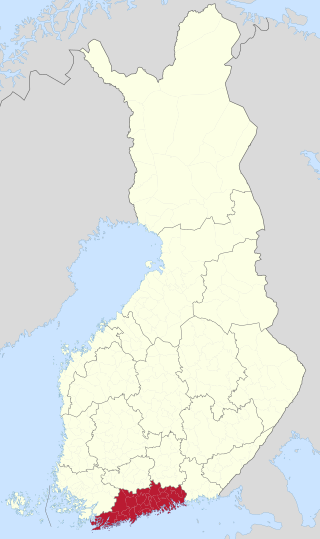
Uusimaa is a region of Finland. It borders the regions of Southwest Finland, Tavastia Proper (Kanta-Häme), Päijänne Tavastia (Päijät-Häme), and Kymenlaakso. Finland's capital and largest city, Helsinki, along with the surrounding Greater Helsinki area, are both contained in the region, and Uusimaa is Finland's most populous region. The population of Uusimaa is 1,734,000.
Ostrobothnian Swedish is a variety of Finland-Swedish, spoken in Finland. Outside the autonomous island province of Åland, which is officially monolingually Swedish, Ostrobothnia is the only region of mainland Finland where Swedish-speakers are the majority (51%).
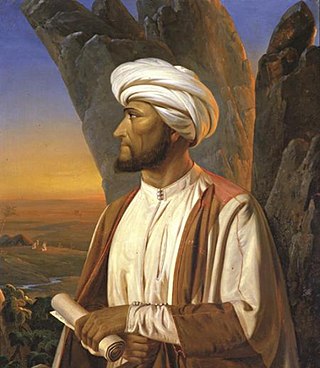
Georg August Wallin was a Finnish orientalist, explorer and professor remembered for his journeys in the Middle East during the 1840s.

The Russo-Swedish War of 1495–1497, known in Sweden as the Stures' Russian War, was a border war which occurred between the Grand Duchy of Moscow and the Kingdom of Sweden. Although the war was relatively short, and did not lead to any territorial changes, it has significance as the first war between Sweden and Moscow. Sweden earlier fought wars against the Novgorod Republic, before Novgorod was formally annexed to Moscow in 1478.

Vyborg Castle is a fortress in Vyborg, Russia. It was built by the Swedes during the Middle Ages around which the town of Vyborg evolved. The castle became the stronghold of the Swedish realm in the Karelian region. Throughout the centuries, it was the first defense of the kingdom against the Russians. Its military and strategic status in the late Middle Ages was second only to the fortified capital Stockholm. Currently it serves as the site of Vyborg Regional Museum.
The Diocese of Ratzeburg is a former diocese of the Catholic Church. It was erected from the Diocese of Oldenburg c. 1050 and was suppressed in 1554. The diocese was originally a suffragan of the Archdiocese of Hamburg; in 1072 it became a suffragan of the merged entity — the "Archdiocese of Hamburg and the Diocese of Bremen". The territory of the diocese was located in what is today the states of Schleswig-Holstein and Mecklenburg-Vorpommern in Germany. The cathedral church of the diocese — dedicated to Ss. Mary and John — is still extant in the city of Ratzeburg. Following its suppression as part of the Protestant Reformation, the remaining Catholic adherents were only represented by the Apostolic Vicariate of Northern Germany. The whole territory of the diocese is today included in the Roman Catholic Archdiocese of Hamburg.

Magnus von Wright was a Swedish-Finnish painter and educator. In addition to bird illustrations, he was also known for his landscapes.

Kastelholm Castle is a Swedish-built medieval castle located off Road 2 in Sund, Åland, Finland, approximately 25 kilometres (16 mi) northeast of Mariehamn, overlooking a fjord to the south of the village of Kastelholm. Along with Hämeenlinna, Olavinlinna in Savonlinna, Raseborg, and Turku, Kastelholm is one of only five surviving Finnish medieval fortresses that are also considered to be architecturally substantial. Built in the 14th century, and held in fief during the Middle Ages by various nobles, feudal chiefs, and kings, it had significant period in the 15th and 16th centuries.

There are scattered descriptions of early Finnish wars, conflicts involving the Finnish tribes, some of which took place before the Middle Ages. The earliest historical accounts of conflicts involving Finnish tribes, such as Tavastians, Karelians, Finns proper and Kvens, have survived in Icelandic sagas and in German, Norwegian, Danish and Russian chronicles as well as in Swedish legends and in Birch bark manuscripts. The most important sources are Novgorod First Chronicle, Primary Chronicle and Eric Chronicles.
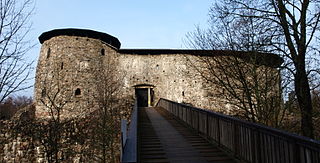
Raseborg is a town and municipality of Finland. It was created on January 1, 2009, when the municipalities of Ekenäs, Karis and Pohja were consolidated into a single town, creating the largest Swedish-speaking-majority city of Finland in terms of population. Of these, Ekenäs now serves as the administrative center of Raseborg. The name of the new town is based on the Raseborg Castle located in Ekenäs, or formerly in the municipality of Snappertuna. Historically the name of the county was also Raseborg in the 14th century.

Hermann of Dorpat (1163–1248) was the first Prince-Bishop of the Bishopric of Dorpat (1224–1248) within the Livonian Confederation.
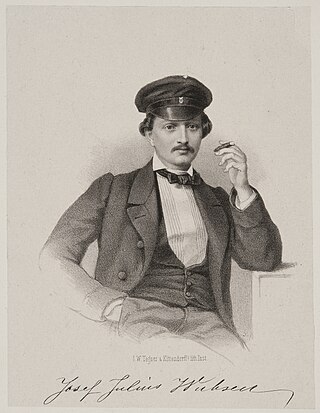
Josef Julius Wecksell was a Finnish poet and playwright.
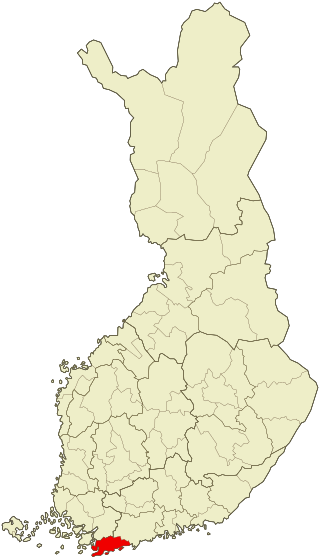
Raseborg sub-region is a subdivision of Uusimaa and one of the Sub-regions of Finland since 2009.

Vivica Aina Fanny Bandler was a Finnish-Swedish theatre director and agronomist. She bought a theatre in Helsinki in 1955 and is credited for popularizing avant-garde Finnish theatre. She was also theatre director in Oslo (1967-69) and at the Stockholm City Theatre (1969-1979).

In Swedish and Finnish history, Finland under Swedish rule is the historical period when the bulk of the area that later came to constitute Finland was an integral part of Sweden. The starting point of Swedish rule is uncertain and controversial. Historical evidence of the establishment of Swedish rule in Finland exists from the late 13th century onwards.

Suitia Manor is a historical manor house in Siuntio in the southern coast of Finland. The history of the manor dates back to the medieval era. The oldest parts of the current main building are from 1540s although the facade that we see today is from the early 1900s.





















